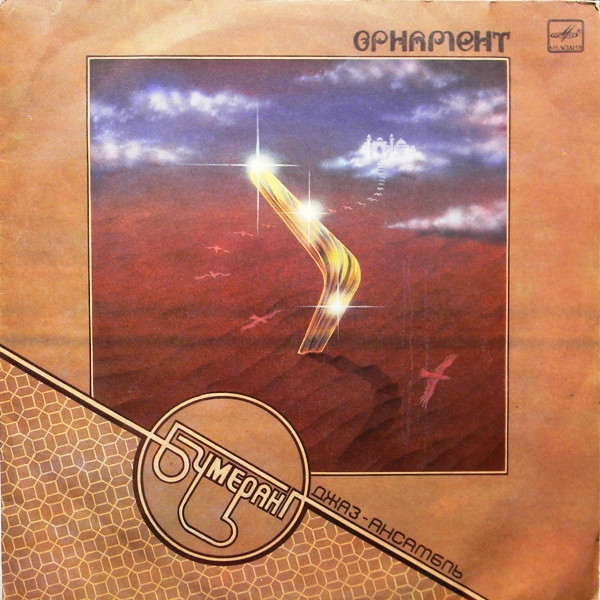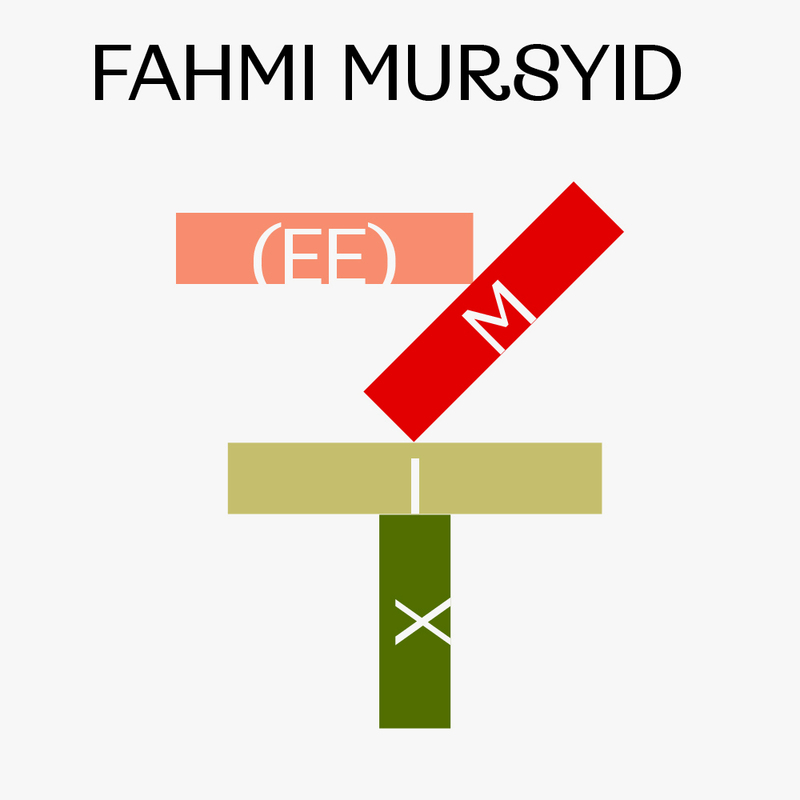Melodiya record label
Fergana-born poet and DJ Hamdam Zakirov returns for part two of his series on the Fergana Jazz Festival, which played an important role in the development of the Central Asian jazz scene and Soviet music in general. He discusses the origins and impact of the Kazakhstani Group Boomerang, the importance of the piece The Oriental Suite, comprised of compositions by the quintet of Tashkent Jazz Club soloists directed by Oleg Gotskozik, and details the legacy of Sato, a group whose progress was cut tragically short.
While doing researchresearchThe author thanks Leonid Atabekov, one of the organizers of the Fergana jazz festivals and the head of the Sato ensemble, for his invaluable help in the work on this series of texts. for this article, I came to a rather unexpected conclusion. Certainly, it was just an assumption, but still—an assumption that fits into a beautiful and, who knows, maybe even a quite plausible theory: the history of jazz in Central Asia revolved around my hometown. How could it be otherwise, since, as I realized, virtually every important Central Asian band I was planning to talk about had participated in the Fergana Jazz Festivals? But the most important thing I realized was that apparently it was those very festivals that led to, if not to the discovery of a new style (some collectives had already been performing it), then to its formation in a single direction and to its rapid development, as well as the professional and creative growth of the musicians and ensembles. The results were already obvious several years later, in the 1980s, when many bands released their records on the Melodiya record label.
Right: The band performing at the 3rd Fergana Jazz Festival, 1984
From Leonid Atabekov’s archive
What I’m describing is a phenomenon that Muscovite Alexey Batashev, a renowned jazz critic, historian, and jazz popularizer, described in his monograph Soviet Jazz in the following way: “Compositions authentic for those times and filled with the vibe of national Asian cultures in their widest range, from Burma to Kazakhstan, could be found on the playlists of Almaty’s Boomerang and Medeo, a quintetquintetOleg Gotskozik’s quintet.—Author's note. of Tashkent Jazz Club soloists, and the Fergana bands Raduga (Boris Smetanov) and Sato (Leonid Atabekov). That was the starting point of Central Asian Soviet jazz.”
Boomerang, founded by drummer Takhir Ibragimov in Almaty in 1973, was one of the first bands to move in this direction. This is how Sergey Gilev describes their performance at the 1st Fergana Jazz festival in 1977: “The Almaty oriental jazz band Boomerang was the real discovery of the festival. This band was one of the first in Kazakhstan to address the musical folklore of the peoples of the East and India. In their compositions, one could trace Uyghur, Kazakhstani, Kyrgyz, and Indian motives, combined with jazz-rock and fusion. After the festival, Boomerang became highly appreciated.”
Boomerang took part in all the festivals held in Fergana and their cross-Union fame seems to be related to this fact. The band was invited to participate in jazz festivals all over the Soviet Union. However, from 1979-1982 they took a break from jazz music and began performing under the name the Arai ensemble, accompanying Rosa Rymbaeva—a singer who was gaining an increasing popularity and by the late 1970s was becoming the most famous Kazakhstani singer in the USSR. This is perhaps the only fact that could explain why the launch of the band’s first recordon Melodiya was delayed until 1983. In total, Boomerang released three records: Boomerang (1983), Ornament (1984), and Mirage (1986).
This Kazakhstani band turned out to be among the few USSR jazz ensembles that captured interest in Japan, where their CD was released in 1988. Boomerang also happened to be the only band represented by two compositions on the Soviet jazz release Red Square Groove—Rare Jazz / Fusion Gems From Russian Vaults (2000), a collection released in England, which I see as rather indicative.
Back in their home country of Kazakhstan, after ending their life on stage life in the mid-1990s, Boomerang became a true legend and is now rightfully considered a pioneer of Kazakhstani jazz. Its members continue their intensive activities with music and teaching—fortunately, in Kazakhstan , jazz did not fall into decline the way it did in many other Central Asian countries with the collapse of the USSR. Jazz clubs regularly open in Almaty, festivals are held (Jazzystan, for example), and as a discipline jazz is taught at the Pop Department of the Music College named after P. I. Tchaikovsky. Moreover, there is also a school of jazz,allegedly “the only [school of jazz] in Central Asia.” You can learn more about it in Katerina Miloslavskaya’s review of The History of Kazakhstani Jazz.
But let’s get back to Fergana. At the 1978 festival, the quintet of Tashkent Jazz Club soloists directed by Oleg Gotskozik presented their performance of The Oriental Suite, which was well-received by both the public and professionals and highly appreciated by the jury, who commented on their performance by saying that “creative cooperation of the ensemble’s members defined the nature of the development of not only the suite itself, but of the entirety of jazz music in Uzbekistan.”
The Oriental Suite is the quintet’s group composition, in which each musician was not only a performer but also the author of a particular section. Rustam Ilyasov is the author of “Prelude”, Yuri Parfyonov composed “Alla”, Konstantin Dobrovolsky—“Lapar”, Sergey Gilev—“The Sufi Dance”, and Oleg Gotskozik composed the first and final parts, as well as “Meditations”. Soon The Oriental Suite was released as a record by the Tashkent branch of the All-Union Recording Company Melodiya, taking an honorable position in the national discography. Undoubtedly, the decision about the release of the suite was influenced by its public performance at the Fergana Jazz Festivals and the high appraisal of the quintet program that was given by specialists.
The Fergana Jazz Festivals played a decisive role in the formation and development of the group Sato. As we mentioned, the band was created by Leonid Atabekov in 1974. That period of the ensemble’s life could be defined by active rehearsals, concerts, the perfection of their performance technique, and a search for a unique sound, as well as a study of the impact of the outside world’s jazz standards and an attentive analysis of the few compositions of Western jazz-rock and fusion that somehow miraculously managed to leak through the Iron Curtain to the USSR and its far southern regions. This period also included performances at weddings in multinational Fergana, which necessitated the inclusion of Uzbek, Tajik, Crimean Tatar, Armenian, Jewish, Gypsy and other melodies in the group’s repertoire. At the time, Fergana was a multinational city—a melting pot of cultures. And finally, as soon as the Fergana Jazz Festivals emerged, it was possible to get acquainted with talented contemporaries and their versatile creativity. Undoubtedly, all these factors led to favourable conditions for the formation of Sato and the group growing into the band we all know and remember—a band that inscribed its name in the history of jazz both in Central Asia and beyond.
At the second festival held 1978, Sato presented several compositions of its own in which their now recognizable style could be felt. In one conversation with me, Leonid Atabekov recalled that, “Having gained the first experience of performing on the international jazz scene, I was once again convinced that we did not need to play traditional jazz, but to make most of the wealth—the musical heritage that simply lay at our feet, of what we live with side by side and hear daily. So, I started looking for musicians together with whom I could implement my new vision of music. For the 2nd All-Union Fergana Jazz Festival, held in September 1978, we had already prepared a completely different program that was entirely based on folk melodies. At that time, my close friend and Tashkent musician Adyur YakubovAdyur YakubovHe would eventually join Grieg Pushen's ensemble and take part in the recording of their famous album Taste of Pomegranate was playing keyboards with us. His composition “Images of the East” was immensely impressive to both the audience and the jury. It became clear to me that we had taken the right direction.”
The ensemble took part in the 3rd festival held in 1984 with a new lineup—now considered classic. This is how Sergey Gilev describes this period in his book Conversations about Jazz: “Fergana was represented at the festival by the Sato ensemble directed by L. Atabekov. By that time, the ensemble had become a highly professional jazz group able to represent its club at any jazz forum. The band is was made up of excellent musicians: Narket Ramazanov (flute, saxophone) freely using national playing techniques, the talented improviser Riza Bekirov (keyboard), David Matatov (percussion) who was able to perfectly cope with the style and rhythm of folklore compositions, the very capable drummer Andrey Atabekov (the youngest band member), the ensemble leader Leonid Atabekov (flute, saxophone, bass guitar, and mixing), and finally, Enver Izmailov—an exceptional guitarist and a master of a unique technique of playing this instrument that allows him to achieve the sound of two or three instruments simultaneously without using overdubbing. Enver Izmailov is undoubtedly one of the most talented guitarists and he now is widely known and recognized as the brightest guitarist in the jazz world.”
From Leonid Atabekov’s archive
The fusion of West and East the group had managed to achieve eventually took its complete form and, as the performance of the ensemble at the 3rd Fergana Jazz Festival in 1984 showed, sounded flawless. It was decided that a record should be released and thus, in 1986, EfsaneEfsane“Legend” in Crimean-Tatar, Sato’s first album, saw the light. At the 1986 All-Union Music Recording Competition, the high quality of the record was appreciated. Certainly, one should pay tribute to the skillfulness of recording sound engineer Valentin Selyutin, but the masterly teamwork and professionalism of the collective should also be noted: as Leonid recalls now, the record was ready after only three shifts in the studio, that is , after 18 hours!
A year later, Sato made its second and last record—Pass the Good Around. Unlike the first, impressionistic album with its meditative, transparent, filigree music, the second one was full of expression and contained more folklore elements that could even be seen as dance hits.
The ensemble toured all over the USSR. In 1988, the group performed at a festival in Tallinn where they received invitations to tour around Germany, Hungary, and Finland. The band was noticed and gained success and recognition, but in the summer of 1989, the tragic Fergana massacreFergana massacreIn May–June 1989, in the Fergana valley of the Uzbek Soviet Socialist Republic clashes occurred between native Uzbeks and Meskhetian Turks, which led to the evacuation of the latter from the region. occurred. Due to these events and the general feeling that the USSR was about to collapse, most of the ensemble's musicians decided to leave their native Fergana and move to their “historical homeland”—fortunately, the unofficial ban on Crimean Tatars’ settlement in the Crimea had been lifted not a long time before. So, literally overnight, the history of one of the most brilliant jazz groups, widely known not only in Uzbekistan and the Soviet Union but beyond, was over. According to Leonid Atabekov, Sato had prepared (but not yet recorded) material for at least one more album that was never presented to the public.
The first part of Hamdam Zakirov’s notes on Central Asian jazz can be found here. To be continued
Translated from Russian by Olga Bubich














